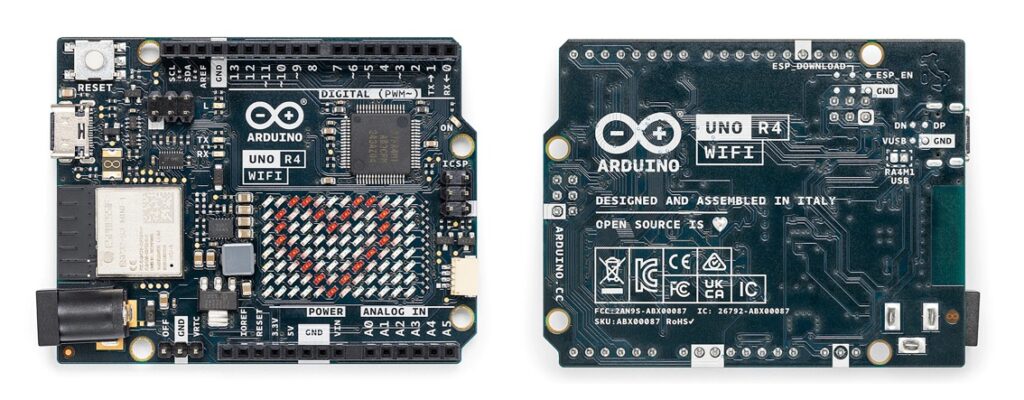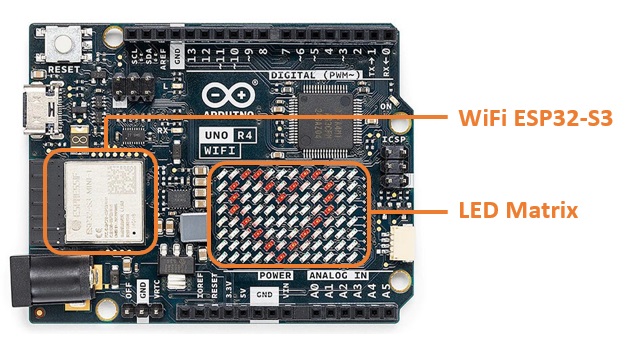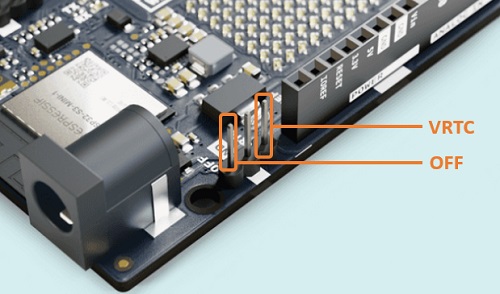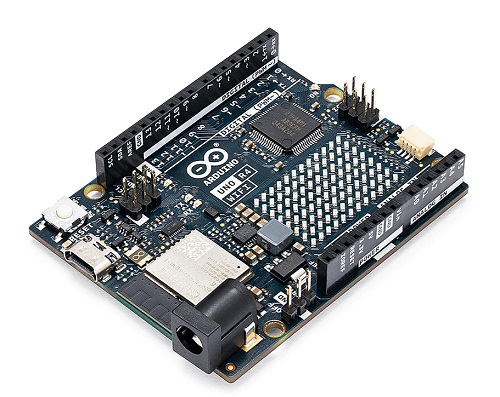
Arduino UNO Rev 4
Finally, after several years Arduino offers us a new version of the very famous Arduino UNO board now in its fourth revision. This new board, extremely enhanced and improved in its technical characteristics, is presented on the market in two different versions:
- Arduino UNO R4 Minima
- Arduino UNO R4 WiFi
In this article we will see the UNO R4 WiFi version in detail, while for the other card I suggest you read this other article.

The new technical features
The Arduino UNO R4 WiFi board has many features in common with its Minima twin such as the processing power of the Renesas RA4M1 microcontroller, a 12-bit DAC, a CAN bus, HID support and the possibility of having input voltages up to 24V. All features that bring it forward compared to the old Revision 3, the previous UNO model.
But the WiFi version also has many other additional features such as wireless connectivity thanks to Espressif’s ESP32-S3 chip. This allows you to develop projects that use WiFi for remote control and data transmission without having to add other peripherals to the board. Furthermore, the board features a 12×8 LED matrix, a Qwiic connector, VRTC and OFF pins.
The extension of the memory compared to the old revision 3 allows, together with the greater computing power, to implement more complex projects using the UNO card and the introduction of these new peripherals allows you to do without adding any peripherals to the card, thus making it leaner, simpler and more flexible application development.
Like its twin Minima, complete hardware compatibility with the projects developed on the previous UNO board is also guaranteed for the WiFi version, maintaining the layout of the I/O pins unchanged and of the same dimensions. Furthermore, the 5V power supply was maintained. Although the input range, as mentioned before, has been extended to 24V, thus guaranteeing the possibility of integrating motors, LEDs and other actuators into projects without the need for external power supplies. All these elements can be used with a single power source.
As for connectivity, this particular UNO R4 WiFi version provides additional WiFi and Bluetooth compatibility, with projects developed with other Arduino boards that implement these features. Compatibility is also guaranteed with Arduino Cloud. These additional features make the Arduino UNO R4 WiFi board the perfect tool for developing IoT projects.
The Arduino UNO R4 WiFi features 2 pins never seen before on UNO boards, the VRTC pin and the OFF pin. The VRTC pin can be used to keep the built-in RTC (Real Time Clock) running even when the board’s main power is turned off, while the OFF pin is used to turn off the board by cutting off the power.
Finally, as a further option, a 12×8 red LED matrix (96 points) is mounted on the board. Also in this case useful for being able to signal messages, animations and data transmission in a visual manner, directly by observing the card, without the further addition of further external LED peripherals to be connected to the input output PINs.
So, summarizing here are the main innovations introduced in this new revision:
Feature also present in the Minima version:
- Hardware compatibility with UNO R3
- Expanded memory and faster clock
- Extra on-board peripherals (12-bit DAC, CAN BUS, OP AMP)
- Extended 24 V tolerance
- SWD connector
- HID support
Features present only in the WiFi version:
- Red LED matrix 12×8
- WiFi and Bluetooth connectivity
- Qwiic connection
- VRTC pin
- OFF pin
Features sheet
| Board | Name | Arduino® UNO R4 WiFi |
| SKU | ABX00087 | |
| Microcontroller | Renesas RA4M1 (Arm® Cortex®-M4) | |
| USB | USB-C® | Programming Port |
| Pins | Digital I/O Pins | 14 |
| Pins | Analog input pins | 6 |
| DAC | 1 | |
| PWM pins | 6 | |
| Communication | UART | Yes, 1x |
| I2C | Yes, 1x | |
| SPI | Yes, 1x | |
| CAN | Yes 1 CAN Bus | |
| Power | Circuit operating voltage | 5 V (ESP32-S3 is 3.3 V) |
| Input voltage (VIN) | 6-24 V | |
| DC Current per I/O Pin | 8 mA | |
| Clock speed | Main core | 48 MHz |
| ESP32-S3 | up to 240 MHz | |
| Memory | RA4M1 | 256 kB Flash, 32 kB RAM |
| ESP32-S3 | 384 kB ROM, 512 kB SRAM | |
| Dimensions | Width | 68.85 mm |
| Length | 53.34 mm | |


